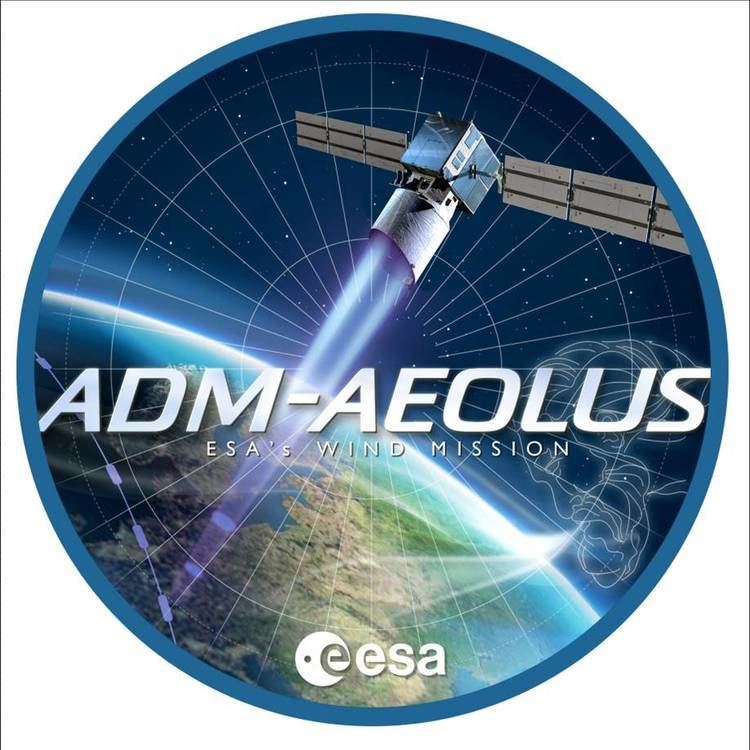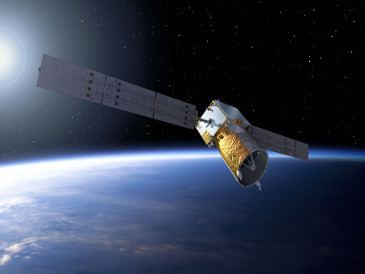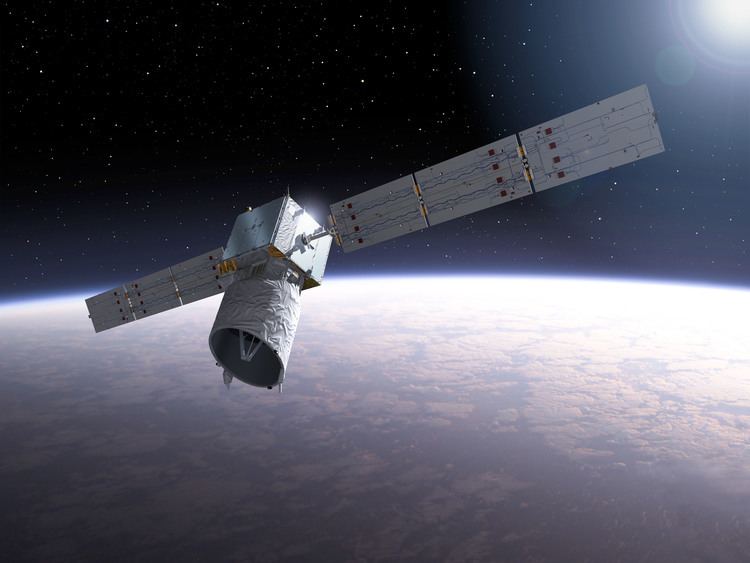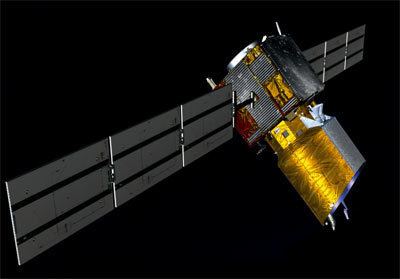Mission duration 3 years (planned) Dimensions 1.74m × 1.9m × 2m | Operator ESA Launch mass 1,366 kg (3,012 lb) Launch date 2017 | |
 | ||
Manufacturer Airbus Defence and Space Similar EarthCARE, PLATO, European Retrievab, Olympus‑1, CHEOPS | ||
ADM-Aeolus, or, in full, Atmospheric Dynamics Mission Aeolus, is an Earth observation satellite built by Airbus Defence and Space that is due for launch in 2017. ADM-Aeolus will be the first equipment capable of performing global wind-component-profile observation and will provide much-needed information to improve weather forecasting.
Contents

in Greek mythology, Aeolus is the name of the ruler of the winds.
Satellite

The Aeolus is the fifth planned satellite in the Living Planet Programme of the European Space Agency (ESA). The main goal of this mission is to further the knowledge of Earth's atmosphere and weather systems. By recording and monitoring the weather in different parts of the world, Aeolus will allow scientists to build complex weather models, which can then be used to help predict how that environment will behave in the future. These predictions will be useful in the short-term, since they can be applied to Numerical Weather Prediction in order to make forecasts more accurate. The mission will thus improve the knowledge of all sorts of weather phenomena, from global warming to the effects of air pollution. Aeolus is seen as a mission that will pave the way for future operational meteorological satellites dedicated to study Earth's wind profiles.

The spacecraft is being built by Airbus Defence and Space. In 2014 integration of ALADIN was completed and vacuum along with vibration testing begun.
Scientific payload
The wind-component profiles will be measured by the Atmospheric LAser Doppler INstrument (ALADIN).
Atmospheric LAser Doppler INstrument (ALADIN)

The ALADIN instrument, essentially a direct detection lidar, consists of three major elements: a transmitter, a combined Mie and Rayleigh backscattering receiver assembly, and a Cassegrain telescope with a 1.5 metres (4.9 ft) diameter. The transmitter architecture is based on a 150 mJ diode-pumped frequency-tripled Nd:YAG laser operating in the ultraviolet at 355 nm. The Mie receiver consists of a Fizeau spectrometer with a resolution of 100 MHz (equivalent to 18 m/s). The received backscatter signal produces a linear fringe whose position is directly linked to the wind velocity; the wind speed is determined by the fringe centroid position to better than a tenth of the resolution (1.8 m/s). The Raleigh receiver employs a dual-filter Fabry–Pérot interferometer with a 2 GHz resolution and 5 GHz spacing. It analyzes the wings of the Rayleigh spectrum with a CCD; the etalon is split into two zones, which are imaged separately on the detector.

The processing of the backscatter signals will produce line-of-sight wind-component profiles above thick clouds or down to the surface in clear air along the satellite track, every 200 kilometres (120 mi). Wind information in thin cloud or at the tops of thick clouds is also attainable; from the data processing, information on other elements like clouds and aerosols can also be extracted. The data will be disseminated to the main NWP-centres in near-real-time.

Development of the ALADIN instrument has been problematic. The ultraviolet laser was causing damage to the optical surfaces in a vacuum. ESA scientists asked NASA for support, however NASA has minimal experience with lidar of this design. Technology required for the satellite was pushing the technology envelope, therefore after problematic development ESA asked Airbus to perform additional full-model tests in a vacuum before continuing mission development. Overall complications involved in the instrument caused an estimated 50% final cost overrun; ESA has agreed to come with additional funding for the project.
Launch
ADM-Aeolus was designed to be compatible with many small-capacity launch vehicles such as Vega, Rockot or Dnepr. In November 2013 ESA scheduled the launch on a VEGA in one of the five flights of the VERTA Programme, but in 2015 launch was postponed to 2017 due to problems with their lidar development. €32.57 million launch contract with Arianespace was signed on 7 September 2016.
